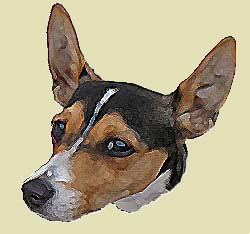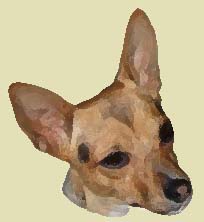

The gene that causes brachury generally produces no obvious effects other than the shortened tail, when seen as a single recessive gene in the heterozygous (Tt/tt) condition. But when this gene for bobtails (brachury) appears in it's dominant homozygous (Tt) form, it then becomes lethal! Since any homozgous (Tt) individual usually dies without reproducing, it is only a concern when (inter)breeding 2 heterozygotes--individuals whose parents were bobtailed themselves, that this information should definitely be considered when selecting breeding pairs, as it affects and can modify the progeny ratios depending on the actual genotype of the crosses being made and in which these T/T genotypes can be produced.
Example of inheritance: A long-tailed female is bred to a long-tailed male, producing 12 long-tailed puppies. A long-tailed female is bred to a bob-tailed male, producing 12 puppies-1/2 with long tails, 1/2 with short tails. A bob-tailed female bred to a bob-tailed male, producing 9 puppies-6 with bob-tails, 3 eith long tails. This example shows a phenotypical ratio of 2:1 found in the viable offspring of the genotype T/+ versus the normal tailed +/+ individual without known ancestors with this trait. Ordinarily, a cross between 2 bob-tailed individuals is expected to produce ratios being either 3:1 with complete dominance or 1:2:1 with intermediate or incomplete dominance.
Simply by avoiding breedings of two naturally bobtailed individuals helps to eliminate the production of "tail-less" offspring, lethal T/T individuals and significantly reduces stillbirths and other borth defects this gene can produce. But it has to start with you, the breeder. Since most Rat Terriers have their tails surgically docked, it's very important for the genetic soundness of our breed that you keep accurate records, or it may not be "known" if they are carriers of the gene responsible for this trait. As a breeder "you" are the one responsible for the breeding and "docking". We all have to record this trait; half tail, short tails, stumpy tails or no tail, by marking it "NB" on the registeration papers and in pedigrees to know what you might be getting into. After all the "tell-tail_sign" might be missing.
